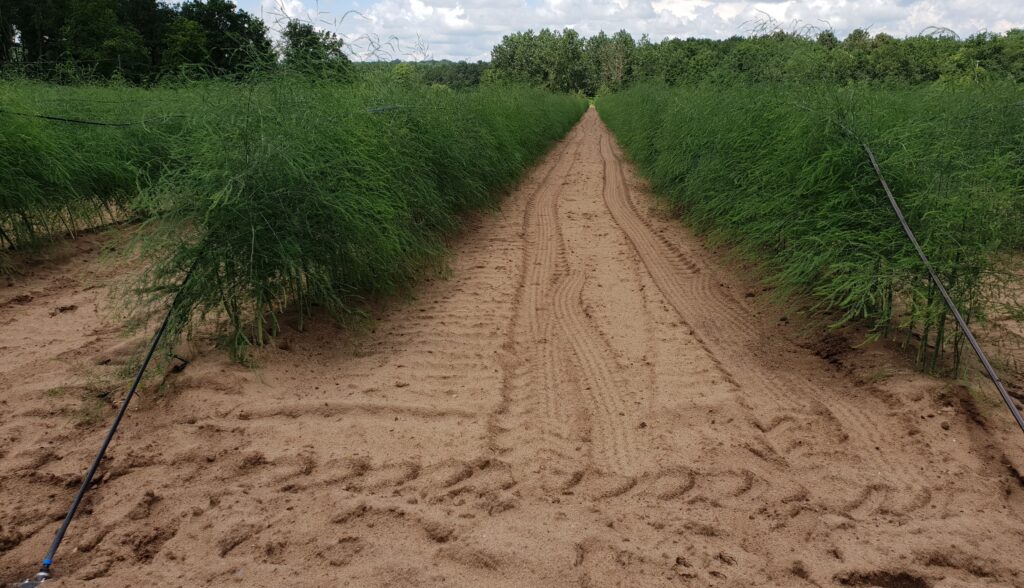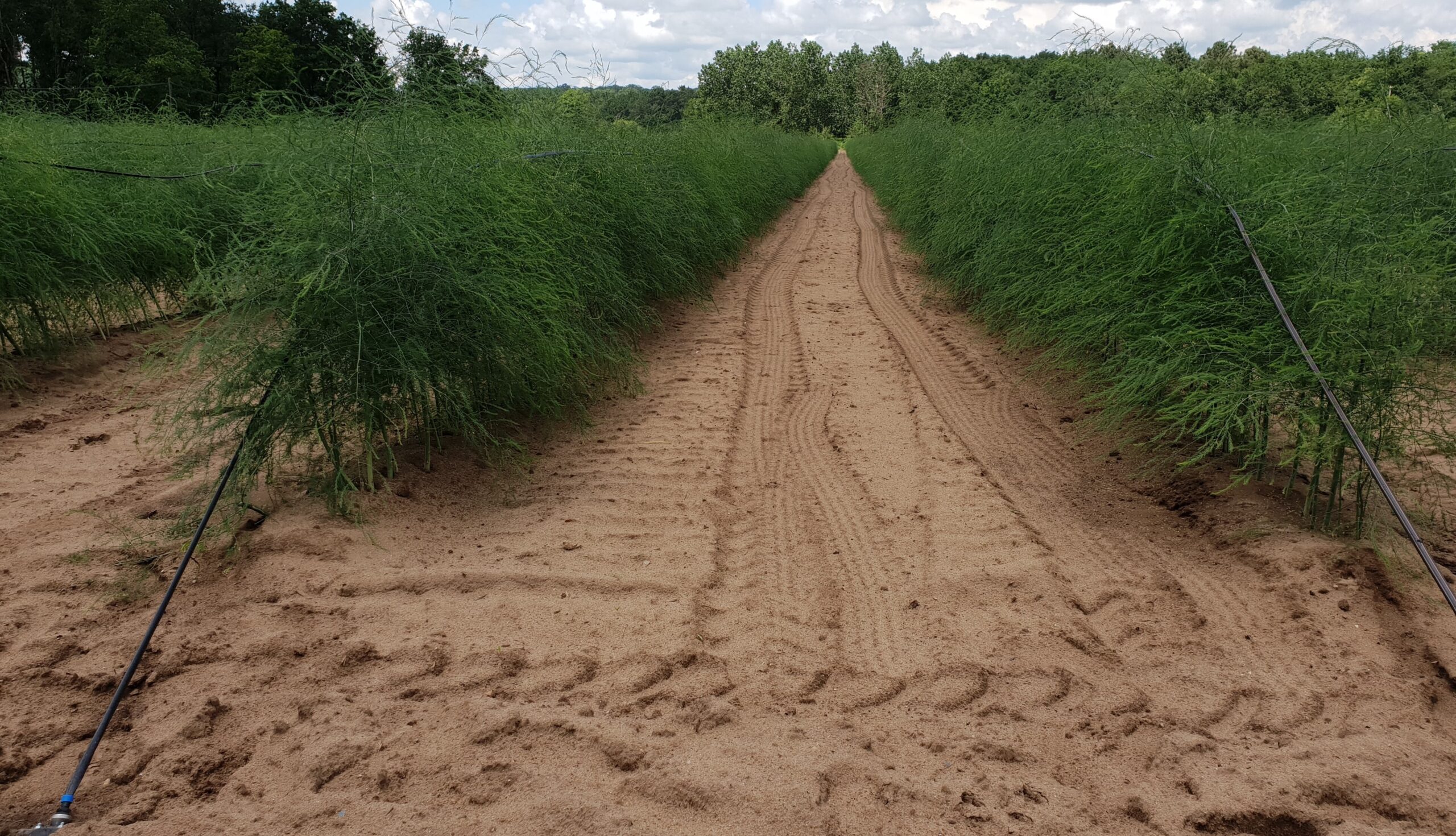“You have to look under the roots of asparagus to check the moisture gradients”
Asparagus World : What are the pros and cons of drip irrigation ?
Jean-Michel Bourrousse : Drip irrigation is first and foremost a means of water conservation. The volume of water supplied can be up to 50% less than with the sprinkler method which suffers loss due to evaporation. The drip irrigation system also makes it possible to control and localise fertilisation. On the other hand, drip irrigation requires more technical expertise and monitoring of intakes. Drip piping can be buried, laid on the surface, or placed in foliage. The buried drip pipe, under the crown, is only used in heavy soils (clay, silt) which allow water to rise by capillary action at the level of the roots. For sandy and well-drained soils, the drippers should be placed on the ground or slightly buried (5 cm). The objective is to moisten a layer from 0-70 cm deep.
AW : What are the constraints on use?
J-M. B. : Drip irrigation requires a good level of technical knowhow and, above all, observation. You have to look in the soil and under the roots to check the moisture levels and gradients. Tensiometer probes are useful for this. The piping network must be checked because it can be degraded by insect larvae attacks (wireworms, etc.), birds and even small game. Water quality is also important. Usually, surface water (river, lake, etc.) is loaded with silt, algae and organic matter. Groundwater is, however, sometimes too high in calcium and iron. Drip irrigation therefore requires a good filtration system upstream of the installation and regular maintenance and checking of the network and piping.
AW : What are the rules for installing a drip system?
J-M. B. : The supply of water by drip can be achieved using recyclable piping (thickness of 200 micron) and renewed every year or using recoverable piping (1 mm thick) that can be used throughout the duration of the crop. Recyclable piping makes it possible to have new equipment every year but this can be more prone to damage. Recoverable piping is more robust but requires more maintenance.
The number of irrigation lines depends on the nature of the soil and the number of planting rows, either 1 or 2. In silty clay, 1 line of drippers is installed beside the planting line. In sandy soil, it is essential to install two lines, one on each side. The piping is laid on the ground and slightly buried (5 cm). To avoid damage (insects, larvae, birds), the piping is sometimes installed in the foliage, which can lead to a less homogeneous distribution and to extra installation time. Once the installation is set up, it is very important to check the wet bulb formation at the roots and to monitor the moisture in the soil by visual observations (with an auger) and/or tensiometer probes.
























